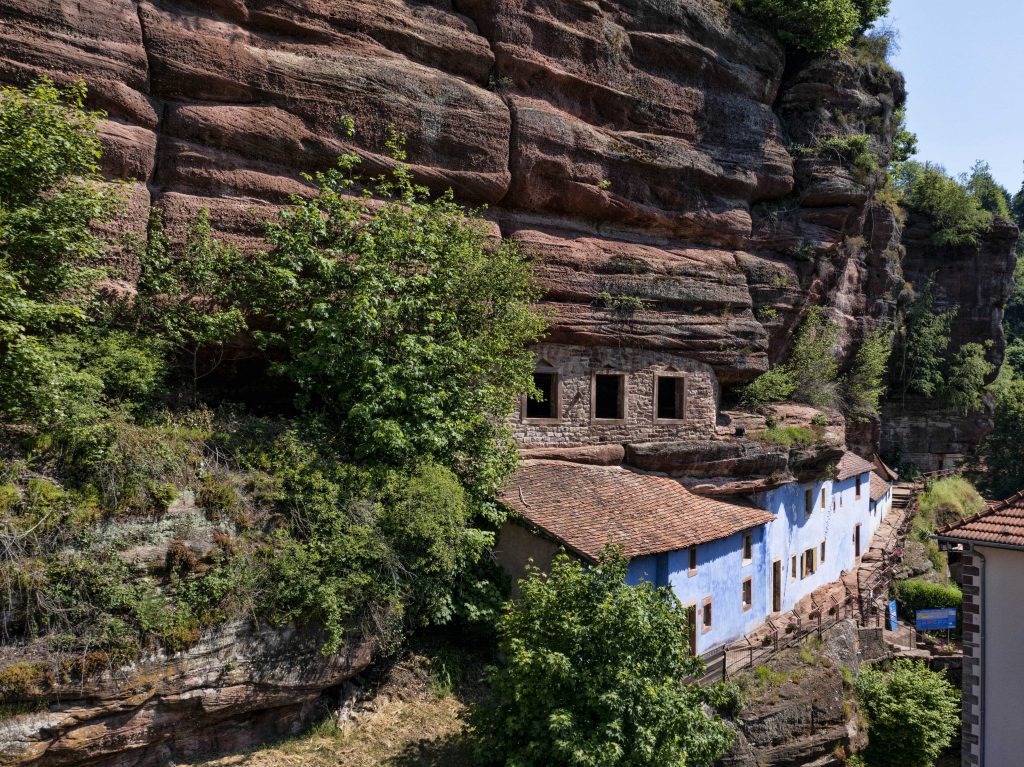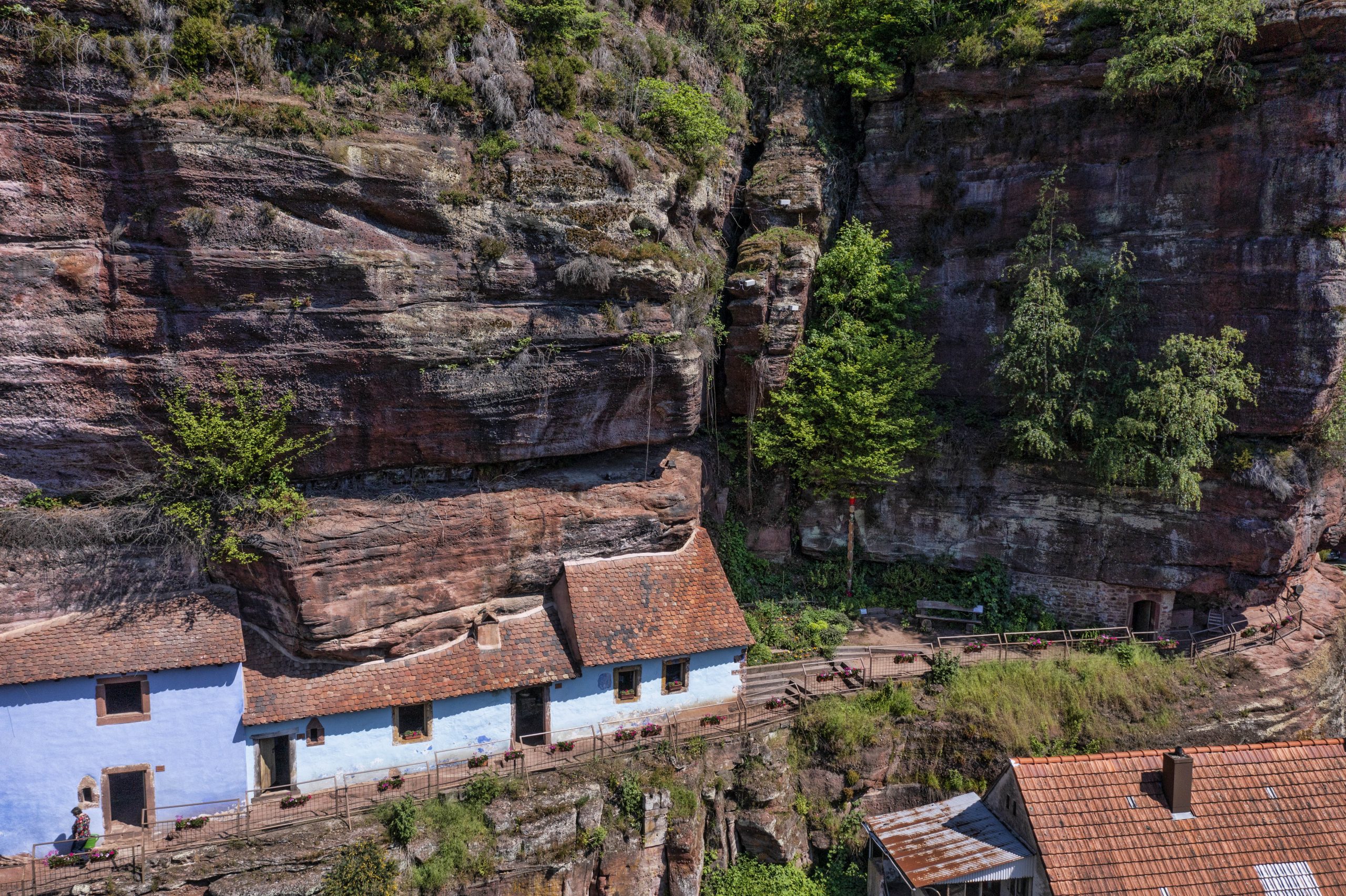
The Maisons des Rochers
The troglodytic houses of Graufthal are singular elements of the cultural heritage of the Northern Vosges. These unique dwellings in Alsace are built on a rocky overhang of a pink sandstone cliff. Now restored and furnished, the three picturesque houses allow visitors to discover the life of their former occupants.
Authentic witnesses of a close past
Built at the beginning of the 19th century, this type of construction, in the cliffs, made it possible to avoid major foundation work. Indeed, the rock served as floor, wall and ceiling, and when covered by a roof and a front wall, it sheltered real living spaces. Even if the permanent humidity due to the porosity of the stone made the living conditions difficult, the south orientation of the houses allowed the inhabitants to benefit from the sun a great part of the day. Moreover, the houses being located in height, the inhabitants were protected from the risks of floods in the valley.
In 1899, the archaeologist Robert Forrer, joined by Charles Spindler, undertook excavations on the site of the Maisons des Rochers. According to him, the houses were probably used by the Benedictine nuns as a warehouse in the Middle Ages. The fence posts, of which the holes in the rock intended for this purpose still remain, bear witness to this. Around the 12th century, some of these wooden buildings were used as temporary dwellings, then transformed into stone houses in the 18th century. From the beginning of the 20th century, the houses were gradually deserted. Only the Ottermann sisters continued their life in their house, until the death of Catherine, the last troglodyte, in 1958.
The AMVS, after having ensured the maintenance of the site, bought the houses from their owners. The site was then restored and developed by the association with the participation of the Northern Vosges Regional Nature Park. Today, the association ensures the animation, the management as well as the maintenance.
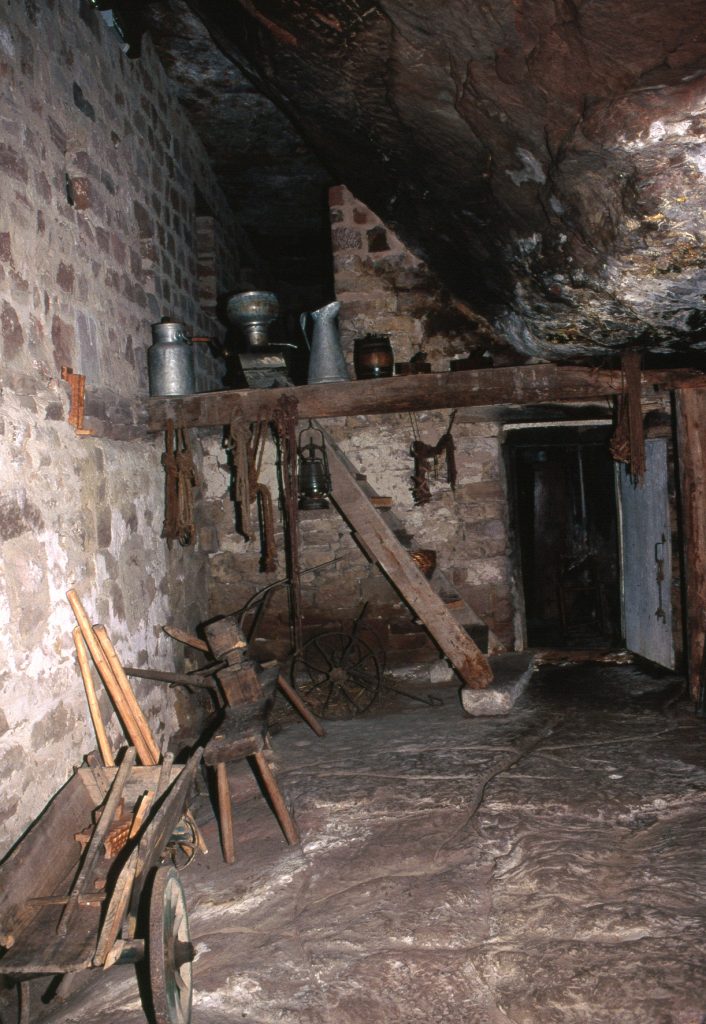
The Weber‘s House
The house has a living room and a workshop/stable and a second floor used as a hayloft and dormitory for the six children of the family. Electricity was installed in 1920, the only modern comfort in the house. In 1931, the upper floor collapsed and Mrs. Weber, a widow since 1880, abandoned her house and died shortly afterwards.
The Wagner’s House
The Wagner family left the house around 1910. After the restoration work in 1990, the three living rooms were converted into an exhibition space.
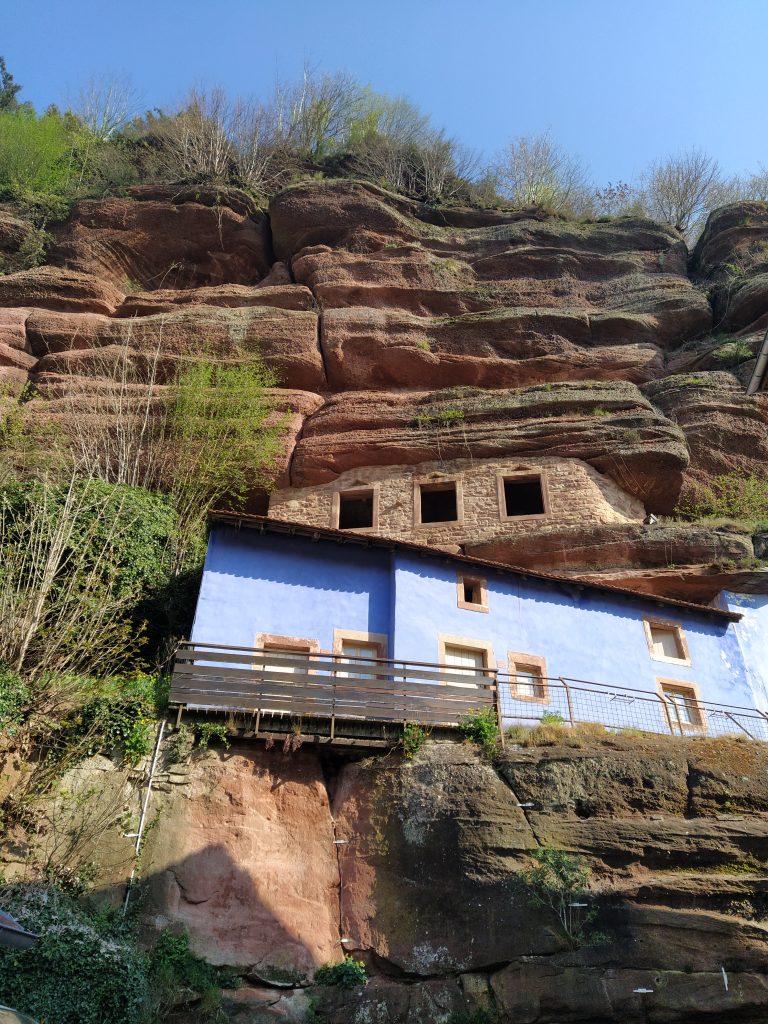
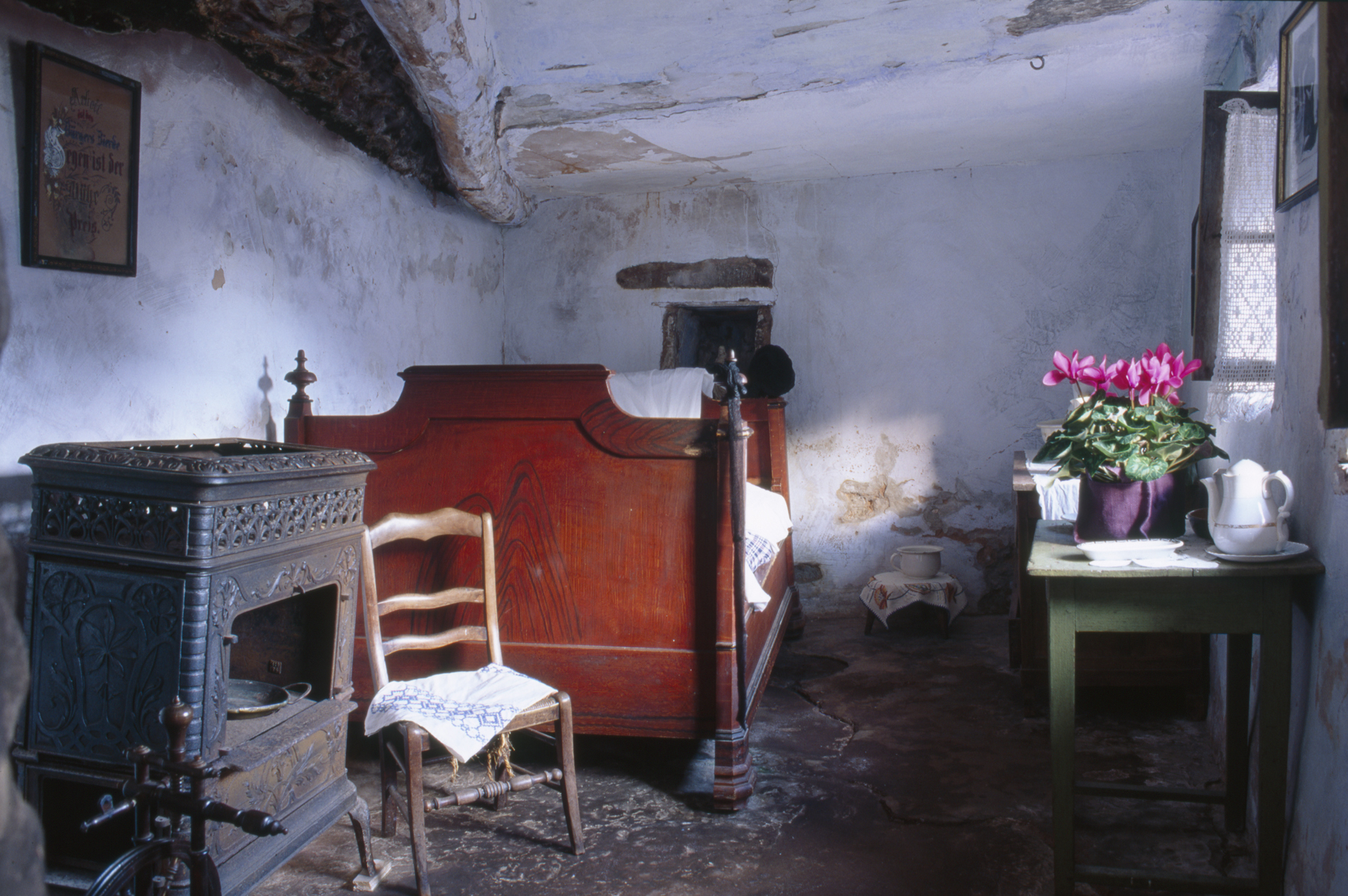
Bedroom of the Otterman’s house
Catherine Ottermann
in front of her house
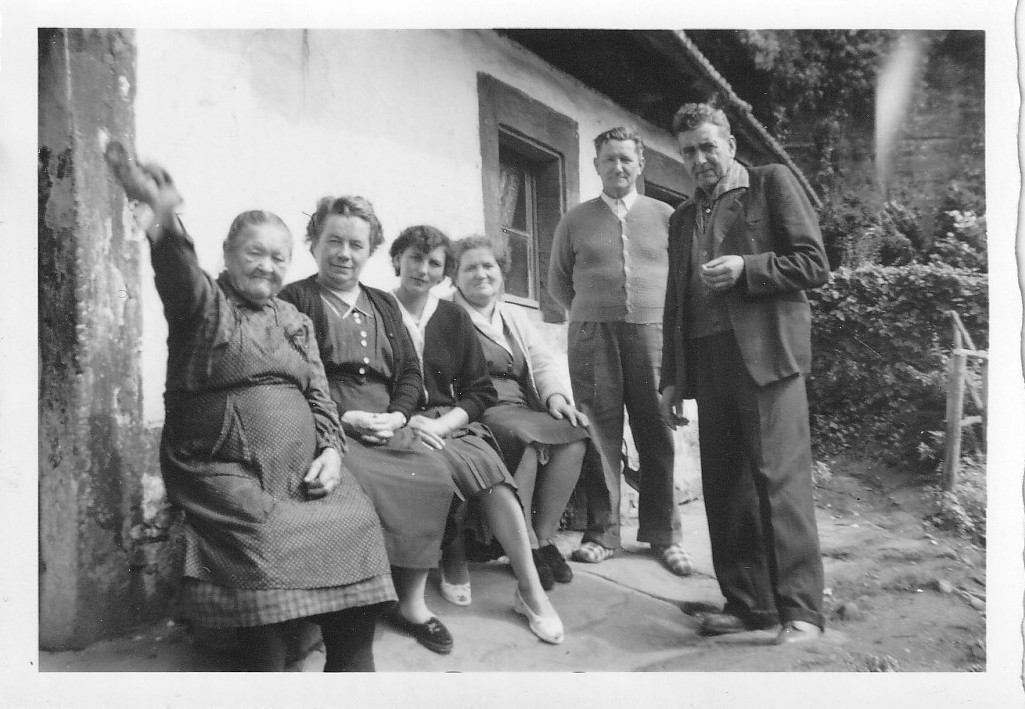
The Ottermann family
1920
The Otterman’s House
Composed of a kitchen used as an entrance and one-bedroom apartment, as well as a stable and a shed, this house is the smallest of the three. At that time, the eight children of the family slept in the attic, which was only accessible from the outside. Madeleine, the eldest, died in 1947 at the age of 89, and Catherine, the famous “Felsekaeth“, remained the last cave dweller in Graufthal for eleven years.
The match factory
According to local tradition, the building above the houses, built in the 19th century, is a former match factory. This assumption is also based on the fact that there were chemical match factories in the area.
